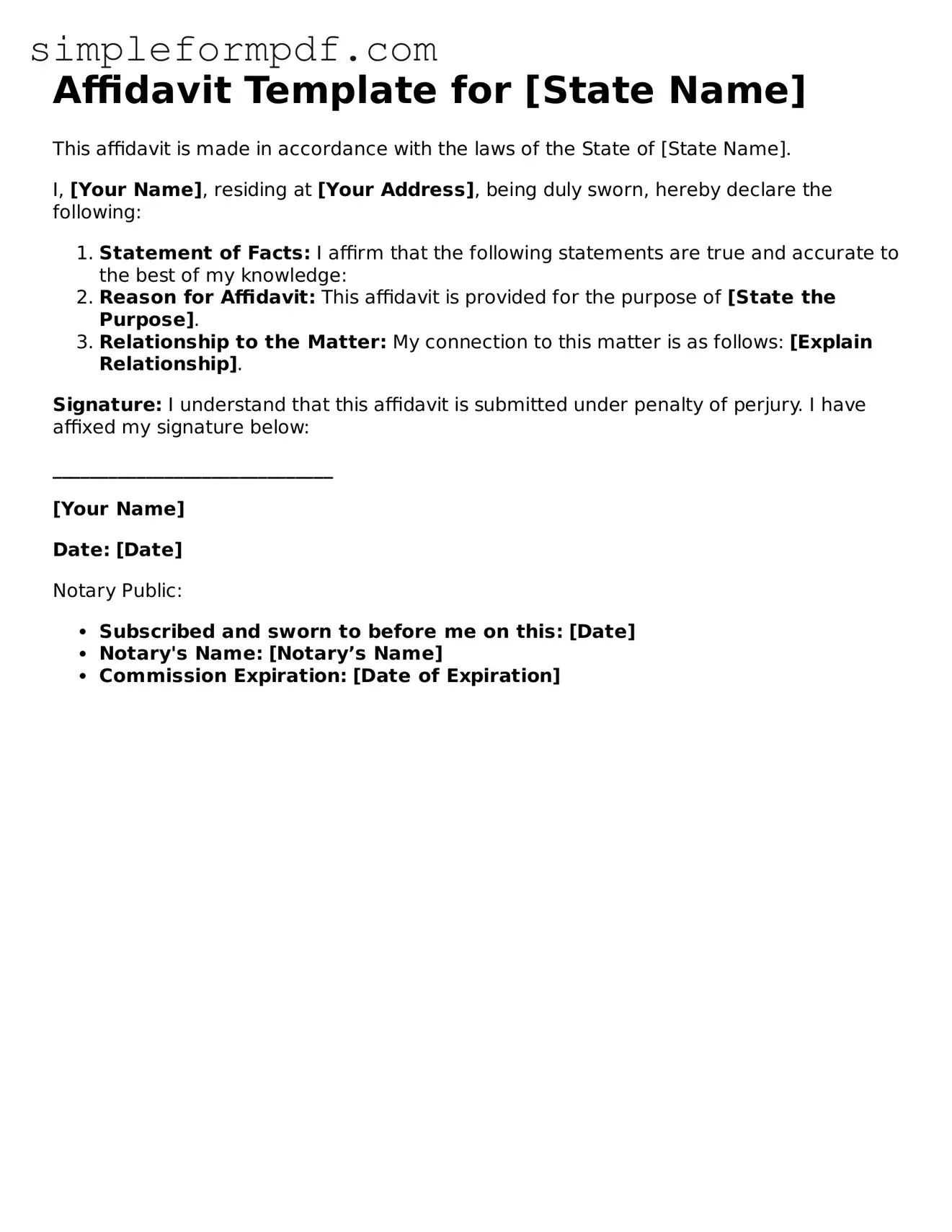Fillable Affidavit Template
An affidavit is a written statement made under oath, often used in legal proceedings to provide evidence or support a claim. This form serves as a crucial tool for individuals needing to affirm the truth of their statements in a formal manner. If you need to fill out an affidavit, click the button below to get started.
Launch Editor
